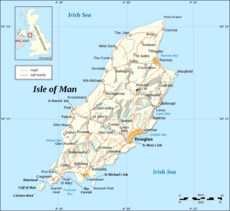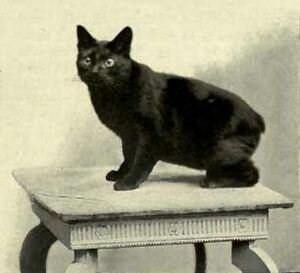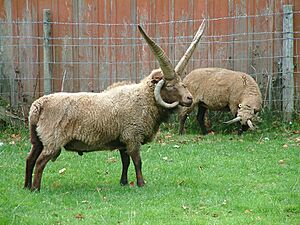Isle of Man facts for kids
Quick facts for kids
Isle of Man
|
|||
|---|---|---|---|
|
British Crown Dependency
|
|||
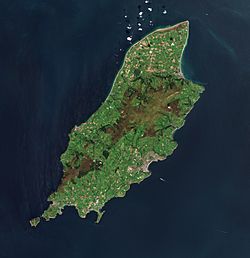 |
|||
|
|||
| Motto: | |||
| Anthem: "O Land of Our Birth" | |||
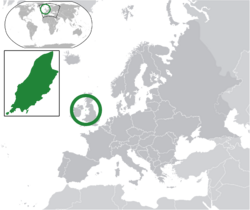
Location of the Isle of Man (green), in Europe (dark grey)
|
|||
| Sovereign state responsible for the Isle of Man | United Kingdom | ||
| Norse control | 9th century | ||
| Scottish control | 2 July 1266 | ||
| English control | 1399 | ||
| Revested into British Crown | 10 May 1765 | ||
| Capital | Douglas 54°09′N 4°29′W / 54.15°N 4.48°W |
||
| Official languages | |||
| Ethnic groups
(2021)
|
|||
| Religion
(2021)
|
|
||
| Demonym(s) | Manx | ||
| Government | Parliamentary democratic constitutional monarchy | ||
| Charles III | |||
| Sir John Lorimer | |||
| Alfred Cannan | |||
| Legislature | Tynwald | ||
| Legislative Council | |||
| House of Keys | |||
| Area | |||
|
• Total
|
574 km2 (222 sq mi) (unranked) | ||
|
• Water (%)
|
1 | ||
| Highest elevation | 2,030 ft (620 m) | ||
| Population | |||
|
• 2021 census
|
84,069 (202nd) | ||
|
• Density
|
148/km2 (383.3/sq mi) (86th) | ||
| GDP (PPP) | 2014 estimate | ||
|
• Total
|
$7.43 billion | ||
|
• Per capita
|
$84,600 (9th) | ||
| GDP (nominal) | estimate | ||
|
• Total
|
US$7.49 billion | ||
| HDI (2010) | 0.849 very high · 14th |
||
| Currency | Pound sterling Manx pound (£) (GBP) |
||
| Time zone | UTC±00:00 (GMT) | ||
|
• Summer (DST)
|
UTC+01:00 (BST) | ||
| Date format | dd/mm/yyyy | ||
| Mains electricity | 240 V, 50 Hz | ||
| Driving side | left | ||
| Calling code | +44 | ||
| UK postcode |
IM1 – IM99
|
||
| ISO 3166 code | IM | ||
| Internet TLD | .im | ||
The Isle of Man (Manx: Mannin also Ellan Vannin) or Mann ( man), is a self-governing British Crown Dependency in the Irish Sea, between Great Britain and Ireland. It is recognised as one of the Celtic nations and is the homeland of the Manx people, a Celtic ethnic group. As head of state, Charles III holds the title Lord of Mann and is represented by a Lieutenant Governor. The government of the United Kingdom is responsible for the isle's military defence and represents it abroad.
Humans have lived on the island since before 6500 BC. Gaelic cultural influence began in the 5th century AD, when Irish missionaries following the teaching of St. Patrick began settling the island, and the Manx language, a branch of the Goidelic languages, emerged. In 627, King Edwin of Northumbria conquered the Isle of Man along with most of Mercia. In the 9th century, Norsemen established the thalassocratic Kingdom of the Isles, which included the Isle of Man. Magnus III, King of Norway from 1093 to 1103, reigned as King of Man and the Isles between 1099 and 1103.
In 1266, King Magnus VI of Norway sold his suzerainty over Man to King Alexander III of Scotland under the Treaty of Perth. After a period of alternating rule by the Kings of Scotland and England, the island came under the feudal lordship of the English Crown in 1399. The lordship revested in the British Crown in 1765, but the island did not become part of the 18th-century Kingdom of Great Britain, nor of its successors, the United Kingdom of Great Britain and Ireland and the present-day United Kingdom of Great Britain and Northern Ireland. It has always retained its internal self-government. In 1881, the Isle of Man Parliament, Tynwald, became the first national legislative body in the world to give women the right to vote in a general election, although this excluded married women.
Internationally, the Isle of Man is known for the TT Motorcycle Races, and the Manx cat, a breed with short or no tails. In 2016, UNESCO awarded the Isle of Man biosphere reserve status.
Contents
Name
The Manx name of the Isle of Man is Ellan Vannin: ellan, a Manx word meaning "island"; Mannin appears in the genitive case as Vannin, with initial consonant mutation, hence Ellan Vannin, "Island of Mann". The short form used in English is spelled either Mann or Man. The earliest recorded Manx form of the name is Manu or Mana.
The Old Irish form of the name is Manau or Mano. Old Welsh records named it as Manaw, also reflected in Manaw Gododdin, the name for an ancient district in north Britain along the lower Firth of Forth. In the 1st century AD, Pliny the Elder records it as Monapia or Monabia, and Ptolemy (2nd century) as Monœda (Mοναοιδα, Monaoida) or Mοναρινα (Monarina), in Koine Greek. Later Latin references have Mevania or Mænavia (Orosius, 416), and Eubonia or Eumonia by Irish writers. It is found in the Sagas of Icelanders as Mön.
The name is probably cognate with the Welsh name of the island of Anglesey, Ynys Môn, usually derived from a Celtic word for 'mountain' (reflected in Welsh mynydd, Breton menez and Scottish Gaelic monadh), from a Proto-Celtic *moniyos.
The name was at least secondarily associated with that of Manannán mac Lir in Irish mythology (corresponding to Welsh Manawydan fab Llŷr). In the earliest Irish mythological texts, Manannán is a king of the otherworld, but the 9th-century Sanas Cormaic identifies a euhemerised Manannán as "a famous merchant who resided in, and gave name to, the Isle of Man". Later, a Manannán is recorded as the first king of Man in a Manx poem (dated 1504).
History
The island was cut off from the surrounding islands around 8000 BC as sea levels rose following the end of the last ice age. Humans colonised it by travelling by sea some time before 6500 BC. The first occupants were hunter-gatherers and fishermen. Examples of their tools are kept at the Manx Museum.
The Neolithic Period marked the beginning of farming, and the people began to build megalithic monuments, such as Cashtal yn Ard in Maughold parish, King Orry's Grave in Laxey, Mull Hill near Cregneash and Ballaharra Stones at St John's. There were also the local Ronaldsway and Bann cultures.
During the Bronze Age, the size of burial mounds decreased. The people put bodies into stone-lined graves with ornamental containers. The Bronze Age burial mounds survived as long-lasting markers around the countryside.
The ancient Romans knew of the island and called it Insula Manavia. During the four centuries when Rome ruled the Province of Britannia, the Roman military controlled the Irish Sea, providing safe passage of agricultural goods from the productive farms of Anglesey to Roman settlements at the English – Scottish frontier. Only a few Roman artefacts have been found on Man, suggesting a lack of strategic value of Man during the era of Britannia. No Roman lighthouses or signal towers have yet been found on Man.
Around the 5th century AD, large-scale migration from Ireland precipitated a process of Gaelicisation, evidenced by Ogham inscriptions, and the Manx language developed. It is a Goidelic language closely related to Irish and Scottish Gaelic.
In the 7th century, Man came under control of the Anglo-Saxon King Edwin of Northumbria, who then launched raids from Man into Ireland. How much influence the Northumbrians exerted on Man is unknown, but very few place names on Man are of Old English origin.
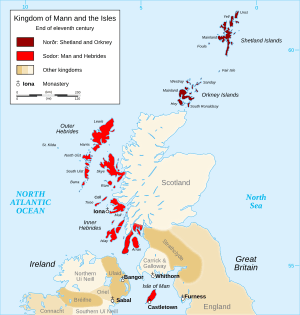
Vikings arrived at the end of the 8th century. They established Tynwald and introduced many land divisions that still exist. In 1266 King Magnus VI of Norway ceded the islands to Alexander III, King of Scots, in the Treaty of Perth. But Scottish rule over Man did not become firmly established until 1275, when the Manx were defeated in the Battle of Ronaldsway, near Castletown.
In 1290 King Edward I of England sent Walter de Huntercombe to take possession of Man. It remained in English hands until 1313, when Robert the Bruce took it after besieging Castle Rushen for five weeks. In 1314, it was retaken for the English by John Bacach of Argyll. In 1317, it was retaken for the Scots by Thomas Randolph, 1st Earl of Moray and Lord of the Isle of Man. It was held by the Scots until 1333. For some years thereafter control passed back and forth between the two kingdoms until the English took it for the final time in 1346. The English Crown delegated its rule of the island to a series of lords and magnates. Tynwald passed laws concerning the government of the island in all respects and had control over its finances but was subject to the approval of the Lord of Mann.
In 1765, the Act of Revestment occurred, whereby the feudal rights of the Dukes of Atholl as Lords of Man were purchased and revested into the British Crown.
In 1866, the Isle of Man obtained limited home rule, with partly democratic elections to the House of Keys, but the Legislative Council was appointed by the Crown. Since then, democratic government has been gradually extended.
During both World Wars, the island was used for the internment of people originating from enemy countries.
In recent times, the economy of the island has benefited from regulatory arbitrage in various contexts, such as low taxes. These have attracted wealthy individuals and, together with arguably lax regulation, industries such as offshore financial services and more recently gambling.
The Isle of Man has designated more than 250 historic sites as registered buildings.
Geography
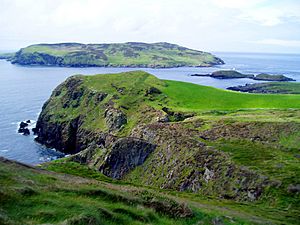
The Isle of Man is an island located in the middle of the northern Irish Sea, almost equidistant from England to the east, Northern Ireland to the west and Scotland (closest) to the north, while Wales to the south is almost the distance of the Republic of Ireland to the southwest. It is 52 kilometres (32 mi) long and, at its widest point, 22 kilometres (14 mi) wide. It has an area of around 572 square kilometres (221 sq mi). Besides the island of Man itself, the political unit of the Isle of Man includes some nearby small islands: the seasonally inhabited Calf of Man, Chicken Rock (on which stands an unstaffed lighthouse), St Patrick's Isle and St Michael's Isle. The last two of these are connected to the main island by permanent roads/causeways.
Ranges of hills in the north and south are separated by a central valley. The northern plain, by contrast, is relatively flat, consisting mainly of deposits from glacial advances from western Scotland during colder times. There are more recently deposited shingle beaches at the northernmost point, the Point of Ayre. The island has one mountain higher than 600 metres (2,000 ft), Snaefell, with a height of 620 metres (2,034 ft). According to an old saying, from the summit one can see six kingdoms: those of Man, Scotland, England, Ireland, Wales and Heaven. Some versions add a seventh kingdom, that of the sea, or Neptune.
Climate
The Isle of Man has a temperate oceanic climate (Köppen Cfb). Average rainfall is higher than averaged over the territory of the British Isles, because the Isle of Man is far enough from Ireland for the prevailing south-westerly winds to accumulate moisture. Average rainfall is highest at Snaefell, where it is around 1,900 millimetres (75 in) a year. At lower levels it can be around 800 millimetres (31 in) a year. In drier spots, the Isle of Man is sunnier than either Ireland or the majority of England at 1,651 hours per year at the official Ronaldsway station. The highest recorded temperature was 28.9 °C (84.0 °F) in Ronaldsway on 12 July 1983. Due to the moderate surface temperatures of the Irish Sea, the island does not receive bursts of heat that sometimes can hit Northern England. The stable water temperature also means that air frost is rare, averaging just ten occasions per year.
On 10 May 2019 Chief Minister Howard Quayle stated that the Isle of Man Government recognises that a state of emergency exists due to the threat of anthropogenic climate change.
| Climate data for Ronaldsway, Isle of Man (1991–2020) | |||||||||||||
|---|---|---|---|---|---|---|---|---|---|---|---|---|---|
| Month | Jan | Feb | Mar | Apr | May | Jun | Jul | Aug | Sep | Oct | Nov | Dec | Year |
| Record high °C (°F) | 13.3 (55.9) |
13.2 (55.8) |
17.1 (62.8) |
20.0 (68.0) |
24.0 (75.2) |
27.5 (81.5) |
28.9 (84.0) |
27.8 (82.0) |
26.5 (79.7) |
22.7 (72.9) |
16.3 (61.3) |
15.0 (59.0) |
29.0 (84.2) |
| Mean maximum °C (°F) | 11.5 (52.7) |
11.2 (52.2) |
12.7 (54.9) |
15.7 (60.3) |
20.0 (68.0) |
21.8 (71.2) |
23.0 (73.4) |
21.3 (70.3) |
20.0 (68.0) |
17.1 (62.8) |
14.2 (57.6) |
12.4 (54.3) |
24.2 (75.6) |
| Mean daily maximum °C (°F) | 8.5 (47.3) |
8.4 (47.1) |
9.4 (48.9) |
11.5 (52.7) |
14.3 (57.7) |
16.5 (61.7) |
18.2 (64.8) |
18.2 (64.8) |
16.6 (61.9) |
13.8 (56.8) |
11.1 (52.0) |
9.2 (48.6) |
13.0 (55.4) |
| Daily mean °C (°F) | 6.4 (43.5) |
6.2 (43.2) |
7.0 (44.6) |
8.7 (47.7) |
11.2 (52.2) |
13.6 (56.5) |
15.4 (59.7) |
15.5 (59.9) |
14.0 (57.2) |
11.5 (52.7) |
8.9 (48.0) |
7.1 (44.8) |
10.5 (50.8) |
| Mean daily minimum °C (°F) | 4.3 (39.7) |
3.9 (39.0) |
4.5 (40.1) |
5.8 (42.4) |
8.1 (46.6) |
10.6 (51.1) |
12.5 (54.5) |
12.7 (54.9) |
11.4 (52.5) |
9.2 (48.6) |
6.7 (44.1) |
4.9 (40.8) |
7.9 (46.2) |
| Mean minimum °C (°F) | −0.9 (30.4) |
−0.8 (30.6) |
−0.2 (31.6) |
1.1 (34.0) |
3.4 (38.1) |
6.5 (43.7) |
8.9 (48.0) |
8.4 (47.1) |
6.6 (43.9) |
3.6 (38.5) |
1.0 (33.8) |
−0.7 (30.7) |
−2.3 (27.9) |
| Record low °C (°F) | −7.8 (18.0) |
−5.8 (21.6) |
−6.0 (21.2) |
−3.4 (25.9) |
−0.8 (30.6) |
1.4 (34.5) |
5.3 (41.5) |
4.9 (40.8) |
1.0 (33.8) |
−1.5 (29.3) |
−4.0 (24.8) |
−7.0 (19.4) |
−7.8 (18.0) |
| Average precipitation mm (inches) | 82.5 (3.25) |
65.5 (2.58) |
62.5 (2.46) |
55.1 (2.17) |
54.6 (2.15) |
62.4 (2.46) |
59.1 (2.33) |
67.4 (2.65) |
70.6 (2.78) |
103.3 (4.07) |
105.2 (4.14) |
95.0 (3.74) |
883.2 (34.78) |
| Average rainy days (≥ 1.0 mm) | 14.2 | 11.4 | 10.9 | 10.0 | 9.8 | 9.3 | 10.2 | 10.8 | 11.2 | 13.4 | 15.8 | 14.7 | 141.7 |
| Mean monthly sunshine hours | 54.6 | 82.8 | 127.3 | 181.9 | 235.3 | 213.4 | 203.5 | 190.2 | 145.9 | 105.4 | 63.9 | 47.0 | 1,651.2 |
| Source 1: Met Office | |||||||||||||
| Source 2: Météo Climat, Infoclimat | |||||||||||||
Governance
The United Kingdom is responsible for the island's defence and ultimately for good governance, and for representing the island in international forums, while the island's own parliament and government have competence over all domestic matters.
Socio-political structure
The island's parliament, Tynwald, is claimed to have been in continuous existence since 979 or earlier, purportedly making it the oldest continuously governing body in the world, though evidence supports a much later date. Tynwald is a bicameral or tricameral legislature, comprising the House of Keys (directly elected by universal suffrage with a voting age of 16 years) and the Legislative Council (consisting of indirectly elected and ex-officio members). These two bodies also meet together in joint session as Tynwald Court.
The executive branch of government is the Council of Ministers, which is composed of Members of Tynwald (usually Members of the House of Keys, though Members of the Legislative Council may also be appointed as Ministers). It is headed by the Chief Minister.
Vice-regal functions of the head of state are performed by a lieutenant governor.
External relations and security
In various laws of the United Kingdom, "the United Kingdom" is defined to exclude the Isle of Man. Historically, the UK has taken care of its external and defence affairs and retains paramount power to legislate for the Island. However, in 2007, the Isle of Man and the UK signed an agreement that established frameworks for the development of the international identity of the Isle of Man. There is no separate Manx citizenship. Citizenship is covered by UK law, and Manx people are classed as British citizens. There is a long history of relations and cultural exchange between the Isle of Man and Ireland. The Isle of Man's historic Manx language (and its modern revived variant) are closely related to both Scottish Gaelic and the Irish language, and in 1947, Irish Taoiseach Éamon de Valera spearheaded efforts to save the dying Manx language.
Defence
The Isle of Man is not part of the United Kingdom; however, the UK is responsible for its defence and external affairs. There are no independent military forces on the Isle of Man.
Manxman status
There is no citizenship of the Isle of Man as such; Isle of Man residents are entitled to British citizenship and can obtain a full UK British passport or British Isle of Man passport.
The Passport Office, Isle of Man, Douglas, accepts and processes applications for the Lieutenant Governor of the Isle of Man, who is formally responsible for issuing Isle of Man–issued British passports, titled "British passport – Isle of Man". The powers conferred on the UK Secretary of State by the British Nationality Act 1981 extend to and are exercised in the Isle of Man by the Lieutenant Governor.
Isle of Man-issued British passports can presently be issued to any British citizen resident in the Isle of Man and also to British citizens who have a qualifying close personal connection to the Isle of Man but are now resident either in the UK or in either one of the two other Crown Dependencies.
European Union
The Isle of Man was never part of the European Union, nor did it have a special status, and thus it did not take part in the 2016 (Brexit) referendum on the UK's EU membership. However, it was included within the EU's customs area, as part of Protocol 3 of the UK's Act of Accession to the Treaty of Rome, allowing Manx goods to be traded throughout the EU without tariffs.
It was not part of the EU's internal market and there were still limitations on the movement of capital, services and labour.
EU citizens were entitled to travel and reside, but not work, in the island without restriction. British citizens with Manxman status were under the same circumstances and restrictions as any other non-EU European relating country to work in the EU.
The political and diplomatic impacts of Brexit on the island are still uncertain. The UK confirmed that the Crown Dependencies' positions were included in the Brexit negotiations. The Brexit withdrawal agreement explicitly included the Isle of Man in its territorial scope, but makes no other mention of it. The island's government website stated that after the end of the implementation period, the Isle of Man's relationship with the EU would depend on the agreement reached between the UK and the EU on their future relationship.
Commonwealth of Nations
The Isle of Man is not a member of the Commonwealth of Nations. By virtue of its relationship with the United Kingdom, it takes part in several Commonwealth institutions, including the Commonwealth Parliamentary Association and the Commonwealth Games. The Government of the Isle of Man has made calls for a more integrated relationship with the Commonwealth, including more direct representation and enhanced participation in Commonwealth organisations and meetings, including Commonwealth Heads of Government Meetings. The Chief Minister of the Isle of Man has said: "A closer connection with the Commonwealth itself would be a welcome further development of the island's international relationships."
Economy
The Isle of Man has no capital gains tax, wealth tax, stamp duty, or inheritance tax and a top rate of income tax of 20%.
The largest sectors by GNP are insurance and online casino operations with 17% of GNP each, followed by ICT and banking with 9% each. The largest sectors by employment are "medical and health", "financial and business services", construction, retail and public administration. Manufacturing, focused on aerospace and the food and drink industry, employs almost 2000 workers and contributes about 5% of gross domestic product (GDP). The sector provides laser optics, industrial diamonds, electronics, plastics and aerospace precision engineering. Tourism, agriculture and fishing, once the mainstays of the economy, now make very little contributions to the island's GDP. The unemployment rate on Man is less than 1%.
Trade takes place mostly with the United Kingdom. The island is in customs union with the UK, and related revenues are pooled and shared under the Common Purse Agreement. T
Culture
The Manx are a Celtic nation.
The culture of the Isle of Man is often promoted as being influenced by its Celtic and, to a lesser extent, its Norse origins. Proximity to the UK, popularity as a UK tourist destination in Victorian times and immigration from Britain have all meant that the cultures of Great Britain have been influential at least since Revestment. Revival campaigns have attempted to preserve the surviving vestiges of Manx culture after a long period of Anglicisation, and there has been significantly increased interest in the Manx language, history and musical tradition.
Language
| person | |
| people | |
| language |

The official languages of the Isle of Man are English and Manx. Manx has traditionally been spoken but has been stated to be "critically endangered". However, it now has a growing number of young speakers. It is increasingly evident on the island: for instance, in public notices and its increasing use in the Tynwald ceremony.
Manx is a Goidelic Celtic language and is one of a number of insular Celtic languages spoken in the British Isles. Manx has been officially recognised as a legitimate autochthonous regional language under the European Charter for Regional or Minority Languages, ratified by the United Kingdom on 27 March 2001 on behalf of the Isle of Man government.
Manx is closely related to Irish and Scottish Gaelic but is orthographically sui generis.
On the island, the Manx greetings moghrey mie (good morning) and fastyr mie (good afternoon) can often be heard. As in Irish and Scottish Gaelic, the concepts of "evening" and "afternoon" are referred to with one word. Two other Manx expressions often heard are Gura mie eu ("Thank you"; familiar 2nd person singular form Gura mie ayd) and traa dy liooar, meaning "time enough", which represents a stereotypical view of the Manx attitude to life.
In the 2011 Isle of Man census, approximately 1,800 residents stated that they could read, write and speak the Manx language.
Symbols

For centuries, the island's symbol has been the so-called "three legs of Man" (Manx: Tree Cassyn Vannin), a triskelion of three legs conjoined at the thigh. The Manx triskelion, which dates back with certainty to the late 13th century, is of uncertain origin. It has been suggested that its origin lies in Sicily, an island which has been associated with the triskelion since ancient times.
The symbol appears in the island's official flag and official coat of arms, as well as its currency. The Manx triskelion may be reflected in the island's motto, Quocunque jeceris stabit, which appears as part of the island's coat of arms. The Latin motto translates as "whichever way you throw, it will stand" or "whithersoever you throw it, it will stand". It dates to the late 17th century when it is known to have appeared on the island's coinage. It may be understood to refer to the Caltrop, a military device with one spike always pointing upwards. The motto itself originally featured on the family badge of the Byzantine/Roman General Flavius Belisarius (505 – 565 AD) along with a representation of a caltrop. It has also been suggested that the motto originally referred to the poor quality of coinage which was common at the time—as in "however it is tested it will pass".
The ragwort or cushag has been referred to as the Manx national flower.
Myth, legend and folklore
In Manx mythology, the island was ruled by the sea god Manannán, who would draw his misty cloak around the island to protect it from invaders. One of the principal folk theories about the origin of the name Man is that it is named after Manannán.
In the Manx tradition of folklore, there are many stories of mythical creatures and characters. These include the Buggane, a malevolent spirit which according to legend, blew the roof off St Trinian's Church in a fit of rage; the Fenodyree; the Glashtyn; and the Moddey Dhoo, a ghostly black dog which wandered the walls and corridors of Peel Castle.
The Isle of Man is also said to be home to fairies, known locally as "the little folk" or "themselves". There is a famous Fairy Bridge, and it is said to be bad luck if one fails to wish the fairies good morning or afternoon when passing over it. It used to be a tradition to leave a coin on the bridge to ensure good luck. Other types of fairies include the Arkan Sonney.
An old Irish story tells how Lough Neagh was formed when Ireland's legendary giant Fionn mac Cumhaill (commonly anglicised to Finn McCool) ripped up a portion of the land and tossed it at a Scottish rival. He missed and the chunk of earth landed in the Irish Sea, thus creating the island.
Peel Castle has been proposed as a possible location of the Arthurian Avalon or as the location of the Grail Castle, site of Lancelot's encounter with the sword bridge of King Maleagant.
One of the most oft-repeated myths is that people found guilty of witchcraft were rolled down Slieau Whallian, a hill near St John's, in a barrel. However, this is a 19th-century legend derived from a Scottish legend, which in turn comes from a German legend. Separately, a witchcraft museum was opened at the Witches Mill, Castletown in 1951. There has never actually been a witches' coven on that site; the myth was only created with the opening of the museum. However, there has been a strong tradition of herbalism and the use of charms to prevent and cure illness and disease in people and animals.
Music

The music of the Isle of Man reflects Celtic, Norse and other influences, including from its neighbours, Scotland, Ireland, England and Wales. A wide range of music is performed on the island, such as rock, blues, jazz and pop.
Its traditional folk music has undergone a revival since the 1970s, starting with a music festival called Yn Chruinnaght in Ramsey. This was part of a general revival of the Manx language and culture after the death of the last native speaker of Manx in 1974.
Orchestral and song composer Haydn Wood grew up on the Isle of Man, moving there in 1885, aged three years old. The island and its folk tunes inspired Wood's music, resulting in the compositions Manx Rhapsody (Mylecharaine), Manx Countryside Sketches, Manx Overture, and the 1933 tone poem Mannin Veen (Manx for "Dear Isle of Man"), based on four Manx folk tunes and scored for wind band. His older brother Harry Wood (1868–1939) was also a musician: a violinist, composer and conductor who became known as "Manxland's King of Music".
Food
In the past, the basic national dish of the island was spuds and herrin, boiled potatoes and herring. This plain dish was supported by the subsistence farmers of the island, who for centuries crofted the land and fished the sea. Chips, cheese and gravy, a dish similar to poutine, is found in most of the island's fast-food outlets. It consists of thick-cut chips, covered in shredded Cheddar cheese and topped with a thick gravy. However, as of the Isle of Man Food & Drink Festival 2018, queen scallops (queenies) have been crowned the Manx national dish with many restaurants, hotels and pubs serving local wild queen scallops.
Seafood has traditionally accounted for a large proportion of the local diet. Although commercial fishing has declined in recent years, local delicacies include Manx kippers (smoked herrings) which are produced by the smokeries in Peel on the west coast of the island, albeit mainly from North Sea herring these days. The smokeries also produce other specialities including smoked salmon and bacon.
Crab, lobster and scallops are commercially fished, and the queen scallop is regarded as a particular delicacy, with a light, sweet flavour. Cod, ling and mackerel are often angled for the table, and freshwater trout and salmon can be taken from the local rivers and lakes, supported by the government fish hatchery at Cornaa on the east coast.
Cattle, sheep, pigs and poultry are all commercially farmed; Manx lamb from the hill farms is a popular dish. The Loaghtan, the indigenous breed of Manx sheep, has a rich, dark meat that has found favour with chefs, featuring in dishes on the BBC's MasterChef series.
Manx cheese has also found some success, featuring smoked and herb-flavoured varieties, and is stocked by many of the UK's supermarket chains. Manx cheese took bronze medals in the 2005 British Cheese Awards and sold 578 tonnes over the year. Manx cheddar has been exported to Canada where it is available in some supermarkets.
Beer is brewed on a commercial scale by Okells Brewery, which was established in 1850 and is the island's largest brewer, and by Bushy's Brewery, Hooded Ram, Odin, Radical Brewing, Noa Brewhouse and Kaneens Brewery. The Isle of Man's Pure Beer Act of 1874, which resembles the German Reinheitsgebot, is still in effect: under this Act, brewers may only use water, malt, sugar and hops in their brews.
Sport
The Isle of Man is represented as a nation in the Commonwealth Games and the Island Games and hosted the IV Commonwealth Youth Games in 2011. Manx athletes have won three gold medals at the Commonwealth Games, including the one by cyclist Mark Cavendish in 2006 in the Scratch race. The Island Games were first held on the island in 1985 and again in 2001. FC Isle of Man was founded in 2019 and is a North West Counties League team.
Isle of Man teams and individuals participate in many sports both on and off the island including rugby union, football, gymnastics, field hockey, netball, taekwondo, bowling, obstacle course racing and cricket. The FC Isle of Man will compete in the North West Counties Football League Premier Division in the next league campaign. It being an island, many types of watersports are also popular with residents.
Motorcycle racing
The main international event associated with the island is the Isle of Man Tourist Trophy race, colloquially known as "The TT", which began in 1907. It takes place in late May and early June. The TT is now an international road racing event for motorcycles, which used to be part of the World Championship, and is long considered to be one of the "greatest motorcycle sporting events of the world". Taking place over a two-week period, it has become a festival for motorcycling culture, makes a huge contribution to the island's economy and has become part of Manx identity. For many, the Isle carries the title "road racing capital of the world".
The Manx Grand Prix is a separate motorcycle event for amateurs and private entrants that uses the same 60.70 km (37.72 mi) Snaefell Mountain Course in late August and early September.
Cammag
Prior to the introduction of football in the 19th century, cammag was the island's traditional sport. It is similar to the Irish hurling and the Scottish game of shinty. Nowadays there is an annual match at St John's.
Theatre and cinema
Built in 1899, to the designs of architect Frank Matcham, and restored in 1976 to its original splendor, the government-owned Gaiety Theatre and Opera House on the Douglas Promenade presents plays, musicals, concerts and comedy shows year-round. Within the Gaiety Theatre Complex, the Broadway Cinema has a capacity of 154 and doubles as a conference venue.
The Palace Cinema is located next to the derelict Castle Mona hotel and is operated by the Sefton Group. It has two screens: Screen One holds 293 customers, while Screen Two is smaller with a capacity of just 95. It was extensively refurbished in August 2011.
Fauna
Two domestic animals are specifically connected to the Isle of Man, though they are also found elsewhere.
The Manx cat is a breed of cat noted for its genetic mutation resulting in a shortened tail. The length of this tail can range from a few inches, known as a "stumpy", to being completely nonexistent, or "rumpy". Manx cats display a range of colours and usually have somewhat longer hind legs compared to most cats. The cats have been used as a symbol of the Isle of Man on coins and stamps; and at one time the Manx government operated a breeding centre to ensure the continuation of the breed.
The Manx Loaghtan sheep is a breed native to the island. It has dark brown wool and four, or sometimes six, horns. The meat is considered to be a delicacy. There are several flocks on the island and others have been started in England and Jersey.
A more recent arrival on the island is the red-necked wallaby, which is now established on the island following an escape from the Wildlife Park. The local police report an increasing number of wallaby-related calls.
There are also many feral goats in Garff, a matter which was raised in Tynwald Court in January 2018.
In March 2016, the Isle of Man became the first entire territory to be adopted into UNESCO's Network of Biosphere Reserves.
Demographics
Population
At the 2021 census, the Isle of Man was home to 84,069 people, of whom 26,677 resided in the island's capital, Douglas. The population increased by 755 persons between the 2016 and 2021 censuses.
Census
The Isle of Man Full Census, last held in 2021, has been a decennial occurrence since 1821, with interim censuses being introduced from 1966. It is separate from, but similar to, the Census in the United Kingdom.
Age structure
- 0–14 years: 16.27% (male 7,587, female 6,960)
- 15–24 years: 11.3% (male 5,354, female 4,750)
- 25–54 years: 38.48% (male 17,191, female 17,217)
- 55–64 years: 13.34% (male 6,012, female 5,919)
- 65 years and over: 20.6% (male 8,661, female 9,756) (2018 est.)
Population density
- 131 people/km2 (339 people/sq mi) (2005 est.)
Sex ratio
| Age range | Ratio |
|---|---|
| At birth | 1.08 |
| 0–14 | 1.09 |
| 15–24 | 1.13 |
| 25–54 | 1.00 |
| 55–64 | 1.02 |
| 65+ | 0.89 |
| Total population | 1 (2020 est.) |
Ethnicity
- White: 94.7%
- Asian: 3.1%
- Black: 0.6%
- Other: 0.6%
- Mixed: 1.0%
Religion
- Christianity: 54.7%
- No religion: 43.8%
- Buddhism: 0.5%
- Islam: 0.5%
- Hinduism: 0.4%
- Judaism: 0.2%
See also
 In Spanish: Isla de Man para niños
In Spanish: Isla de Man para niños
- History of the Isle of Man
- Outline of the Isle of Man
- List of places in the Isle of Man
- United Kingdom–Crown Dependencies Customs Union
- Public holidays in the Isle of Man





